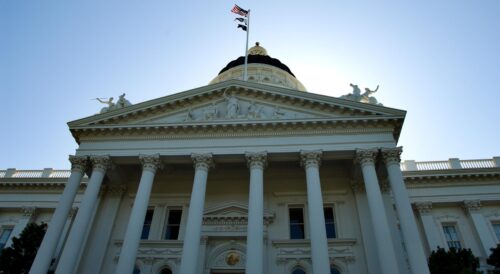Instructions on how states can create their own clean energy incentive hub using RMI’s content and how they can go further to maximize impact.

State Online Clean Energy Incentive Toolkit
How States Can Help Residents and Businesses Access New Federal Incentives to Save Money and Energy
Federal government incentives available now can make it more affordable to make energy-saving building upgrades, purchase, lease, and charge electric vehicles, and install renewable energy.
States can play a key role in sharing information about these federal incentives, while they are still available, to help constituents save money. This toolkit creates a guide for states to create an online clean energy incentive hub that provides clear information on incentives and programs to enable energy and cost savings statewide.
This hub will help households, businesses, local governments, nonprofits, and other organizations in your state save money on energy efficiency, electrification, and renewable energy projects using free federal incentives. Increasing uptake of these incentives can help your state meet its energy efficiency, infrastructure modernization, and clean energy goals.
Navigating all the funding opportunities can be overwhelming. On this webpage, states can find content and instructions on how to build out a clean energy incentive hub.
- Search for incentives, with customized information for different key public audiences with incentive summaries, application instructions, and more
- Clear instructions, including webpage guidance, tips to add in local content, engagement and outreach items, and ideas on future action for states
Why now? What incentives are available?
With the passage of the Inflation Reduction Act in 2022, the federal government created a series of financial incentives to make it more affordable to make energy-efficient building upgrades, electrify buildings, buy and charge electric vehicles, and manufacture clean energy industrial components.
Financial incentives available include but are not limited to the following:
- Rebates provide a discount on something you buy either when you buy it or shortly after the purchase.
- Tax credits reduce the amount of income tax you owe to the government. Tax credits are claimed on your annual tax return for the year in which the eligible purchase was made.
The table below summarizes how long incentives are available and reflects changes made by the One Big Beautiful Bill Act.
| Incentive Phase Out | Incentive Availability |
|---|---|
| Credit for Qualified Commercial Clean Vehicles 45W | Available for vehicles acquired by September 30, 2025 |
| Clean Vehicle Credit 30D | Available for vehicles acquired by September 30, 2025 |
| Credit for Previously Owned Clean Vehicles 25E | Available for vehicles acquired by September 30, 2025 |
| Energy Efficient Home Improvement Credit 25C | Available for property placed in service by December 31, 2025 |
| Residential Clean Energy Credit 25D | Available for expenditures made by December 31, 2025 |
| Energy Efficient Commercial Buildings Deduction 179D | Available for property beginning construction by June 30, 2026 |
| New Energy Efficient Home Credit 45L: | Available for property acquired by June 30, 2026 |
| Alternative Fuel Vehicle Refueling Property Credit 30C | Available for property placed in service by June 30, 2026 |
| Clean Hydrogen Production Tax Credit 45V | Facilities must begin construction by the end of 2027 |
| Clean Fuel Production Credit 45Z | Fuel must be sold by December 31, 2029 |
| Home Efficiency Rebate | Many states are launching rebates in 2025, check status here. |
| Home Electrification and Appliance Rebate | Many states are launching rebates in 2025, check status here. |
| Credit for Carbon Sequestration 45Q | Facilities must begin construction by the end of 2032 |
| Advanced Manufacturing Production Credit 45X |
|
| Clean Electricity Production Tax Credit 45Y |
|
| Clean Electricity Investment Tax Credit 48E |
|
The toolkit includes the following resources
A User Guide for States for instructions on how states can create their own clean energy incentive hub using RMI’s content and how they can go further to maximize impact.
Clean energy incentive educational content states can upload. This content is customized for three audiences to ensure individuals and organizations feel empowered to use clean energy incentives to save money. Each audience page has a downloadable Microsoft Word version in English and Spanish for easy upload access.
- Incentives for Households and Individuals
- Incentives for Businesses
- Incentives for Local Governments, Schools, Nonprofits, and Other Tax-Exempt Entities
- Clean Energy Incentive Hub landing page text for state websites
Disclaimer: The One Big Beautiful Bill Act became law on July 4, 2025, changing many of the incentives included on this site. This page was last updated August 2025 and shows incentives that are currently in place.